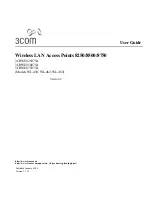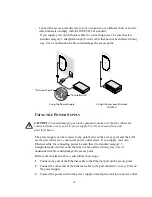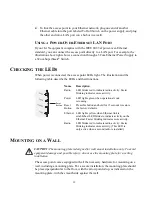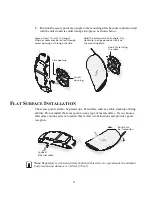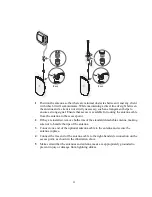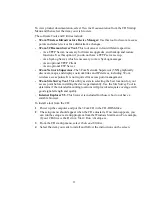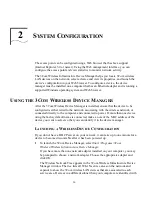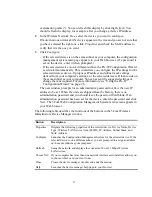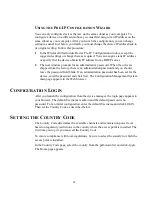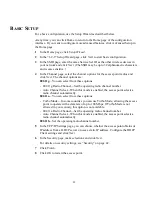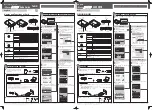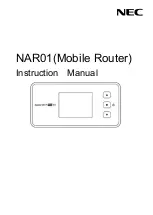
15
D
ECIDING
W
HERE
TO
P
LACE
E
QUIPMENT
AND
P
ERFORMING
A S
ITE
S
URVEY
The access point is ideally designed for vertical installation on a wall surface, but can
also be flat-surface mounted in an elevated location where it will not be disturbed.
Ceiling installation is not recommended.
Whether you choose to mount the access point on a wall or place it on a flat surface,
make sure to select a clean, dry location that is elevated enough to provide good
reception and network coverage. Do not mount the access point on any type of metal
surface. Do not install the access point in wet or dusty areas. The site should not be
close to transformers, heavy-duty motors, fluorescent lights, microwave ovens,
refrigerators or any other electrical equipment that can interfere with radio signals.
If you are connecting the access point to a wired network, the location must provide an
Ethernet connection. You will need to run an Ethernet cable from the power supply to
the access point.
An access point provides coverage at distances of up to 100 Meters (300 Feet). Signal
loss can occur if metal, concrete, brick, walls, floors or other architectural barriers
block transmission. If your location includes these kinds of obstructions, you may need
to add additional access points to improve coverage
Configuring a wireless LAN can be as easy as placing a 3Com Wireless Access Point
in a central area and making the necessary connections to the AP and the clients.
However, installing multiple Access Points may require more planning. Using the
3Com Site Survey tool (located on the installation CD) can help you determine if your
wireless LAN connectivity and throughput is adequate and all users are covered by an
Access Point.
If you plan to use an optional antenna instead of the standard detachable antennas that
are supplied, review “Selecting and Connecting a Different Antenna Model” on
page 22 before selecting the final location and be sure to allow for routing the antenna
cable as required.
For optimal performance, ensure the access point operates in temperature ranges
between –10° C to 40° C (14° F to 104° F). When used with external antennas, the
access point operating temperature range must be 15° C to 40° C (59° F to 104° F).
CAUTION:
It is the responsibility of the installer to ensure that the Power-over-Ethernet
(POE) power supply is properly connected. Connection to any other device, such as a standard
Ethernet card or another POE supply, may result in permanent damage to equipment, electric
shock, or fire. Refer to the installation instructions for proper installation

